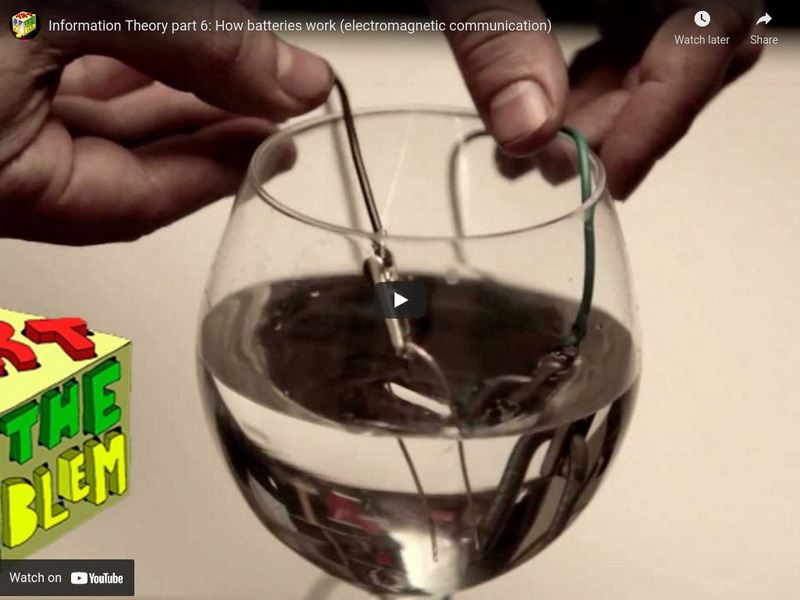University of Virginia
Uva Virtual Lab: Magnetic Induction (Real World)
Compare and contrast the series of video clips illustrating magnetism induction in the real world versus x-ray vision.
Museum of Science
Eie: The Attraction Is Obvious: Designing Maglev Systems Lesson 3
Watch as a teacher engages her fifth-grade students in several experiments to learn more about the properties of magnets. [7:03]
Museum of Science
Eie: The Attraction Is Obvious: Designing Maglev Systems Lesson 4
Watch as students use their knowledge of the properties of magnets and the Engineering Design Process to design a maglev transportation system. [13:50]
Bozeman Science
Bozeman Science: Vector Field
Paul Andersen explains how a vector field shows the distribution of vector quantities. [7:47]
Bozeman Science
Bozeman Science: Magnetic Properties
The following video explains how all material has magnetic properties. Ferromagnetic material can be permanently magnetized, paramagnetic material will align with magnetic fields, and diamagnetic material will align weakly with magnetic...
Roble Media
Roble Media: Science Experiment: Magnets
A virtual experiment illustrating the reason behind the attraction between magnetic objects. 1 min, 22 sec]
Khan Academy
Khan Academy: The Battery & Electromagnetism
Watch the experiment in this video to learn information about electromagnetism.
Brightstorm
Brightstorm: Electromagnetic Induction
Educational video clip provides an explanation of electromagnetic induction. [5:24]
Crash Course
Crash Course Kids 15.2: The Science of Lunch
Even an empty lunch sack is useful to science. You can examine it and come up with some traits. In this episode, Sabrina chats about things like malleability, hardness, conductivity, and magnetism. And all with lunch!
Science Friday Initiative
Science Friday: What Happens When You Levitate Flies?
Everything is a little bit magnetic, says physicist Richard Hill, of The University of Nottingham. So with a powerful magnet, it is possible to levitate almost anything--strawberries, water, insects. In a recent study, Hill levitated...
Khan Academy
Khan Academy: Electricity and Magnetism: Magnetism 8
A continued discussion of the magnetic forces that two current-carrying wires exert on each other.
Khan Academy
Khan Academy: Electricity and Magnetism: Introduction to Magnetism
An introduction to magnetism.
Khan Academy
Khan Academy: Electricity and Magnetism: Magnetism 10: Electric Motors
Why the circuit will keep flipping over in an electric motor.
Khan Academy
Khan Academy: Discovery of Magnetism: Floating Magnet
Can you use a magnet as a compass? How can you find North vs. South pole?
Khan Academy
Khan Academy: Electricity and Magnetism: Magnetism 5
Magnetic force on a wire carrying current.
Khan Academy
Khan Academy: Electricity and Magnetism: Magnetism 7
Learn about the magnetic force that two current-carrying wires exert on each other. [11:00]
Khan Academy
Khan Academy: Discovery of Magnetism: Compass Interactions
If we float two identically magnetized needles they will always orient themselves in the same way. Why?
Khan Academy
Khan Academy: Electricity and Magnetism: Magnetism 3
Discover what happens when a speeding proton goes through a magnetic field. [10:48]
Khan Academy
Khan Academy: Increase Strength of Magnet
How can we increase the strength of a bar magnet using a piece of steel? Why is it stronger? Find out here.
Khan Academy
Khan Academy: Electricity and Magnetism: Magnetism 2
Video lecture explores magnetic fields and their effects on moving electrical charges. [8:59]
Khan Academy
Khan Academy: Electricity and Magnetism: Magnetism 9: Electric Motors
Video lecture explores using a magnetic field to exert torque on a rotating circuit. [10:36]
Khan Academy
Khan Academy: Electricity and Magnetism: Magnetic Field Due to Current
See how a wire carrying a current creates a magnetic field. [9:42]
Khan Academy
Khan Academy: Electricity and Magnetism: Electric Motors
A video lecture that shows how using a commutator can solve the flipping problem and create an electric motor. [6:40]
Crash Course
Crash Course Physics #32: Magnetism
You're probably familiar with the basics of magnets already: They have a north pole and a south pole. Two of the same pole will repel each other, while opposites attract. Only certain materials, especially those that contain iron, can be...






















